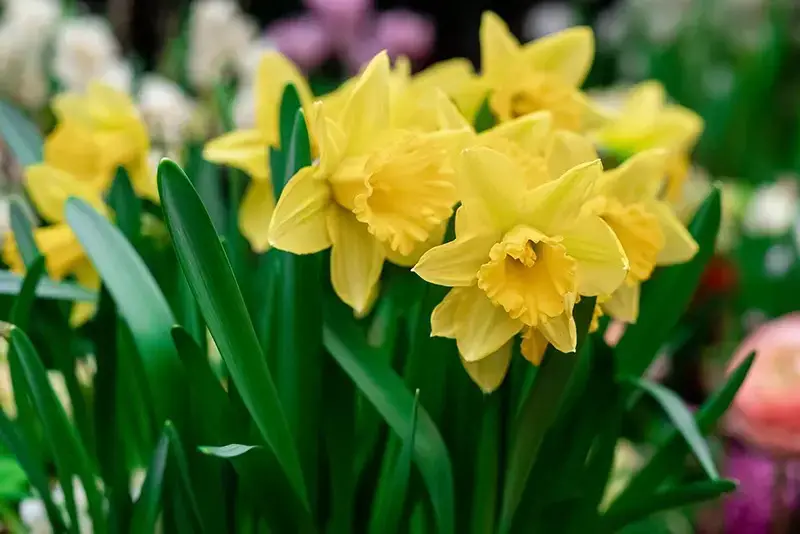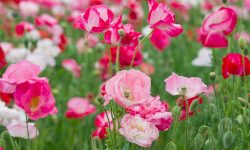Known for their sunny yellow or pure white blossoms, daffodils bring a joyful touch to spring and herald the end of the cold season. However, many gardeners find themselves frustrated when their daffodils produce lush green leaves but fail to bloom. Understanding the reasons behind this issue is key to restoring their vibrant blossoms. From improper planting techniques to nutrient imbalances, various factors can affect a daffodil’s ability to flower.
This guide explores the real reasons why daffodils may stop blooming and what you can do to encourage them to thrive again.
Understanding the Blooming Cycle of Daffodils
Daffodils have a specific growth and blooming cycle that directly influences their flower production. They are perennial bulbs, which means they store energy in their bulbs during the growing season to prepare for the next year’s blooms. In early spring, they send up foliage and flowers, then spend the rest of the season replenishing nutrients before entering a dormant phase in summer.
If this natural cycle is interrupted or the plant does not store enough energy in the bulb, it may fail to bloom the following season. Healthy flowering depends on a combination of proper planting depth, sunlight exposure, and post-bloom care. Understanding this cycle helps gardeners determine what may have gone wrong when daffodils produce only leaves.
Planting Depth and Its Role in Flower Production

Why Planting Depth Matters for Daffodils
Planting depth plays a significant role in whether daffodils bloom successfully. Bulbs planted too shallow may be exposed to fluctuating temperatures, leading to stress and poor bud development. On the other hand, bulbs buried too deeply may struggle to push through the soil in spring, resulting in weak growth or no flowers at all.
The ideal planting depth for most daffodils is about six inches, measured from the top of the bulb to the soil surface. This depth provides insulation during winter while allowing the bulbs to receive adequate cold temperatures needed for dormancy and bud formation.
Correcting Improper Planting Depth
If your daffodils have been planted at an incorrect depth, lifting and replanting them during the dormant season can improve their chances of blooming. Late summer to early autumn is the best time to dig up and reset bulbs. Replanting at the proper depth not only supports better flowering but also helps protect bulbs from temperature extremes and pest damage.
Sunlight Requirements for Healthy Blooming
The Importance of Sun Exposure
Daffodils thrive in full sun to partial shade, but inadequate sunlight is one of the most common reasons they fail to bloom. Without at least six hours of sunlight per day, bulbs may not store enough energy for flower production. In shaded areas, daffodils often produce long, strappy leaves without forming buds because all the energy is directed toward foliage growth rather than flowers.
Shady locations beneath trees or near tall shrubs can also cause overcrowding, where daffodils compete for light and nutrients. Over time, this competition weakens the bulbs, leading to fewer blooms or no flowers at all.
Improving Sunlight Conditions
To encourage blooming, ensure daffodils are planted in an area with plenty of sunlight, especially during the late spring and early summer when the foliage is storing energy for the next year’s growth. If your daffodils are planted in a shaded location, consider relocating them to a sunnier spot after the foliage has died back. Moving bulbs at the right time minimizes stress and helps them adjust before the next growing season.
Nutrient Imbalances and Soil Conditions
How Soil Nutrition Affects Blooming
Soil fertility plays an essential role in daffodil flowering. Excessive nitrogen in the soil promotes lush leaf growth at the expense of flowers. This is a common problem when daffodils are planted near lawns that receive nitrogen-rich fertilizers. Without a proper balance of phosphorus and potassium, bulbs cannot store enough energy to produce strong, healthy blooms.
Poor soil drainage can also affect nutrient absorption and lead to bulb rot, weakening the plant. Daffodils prefer well-draining soil that is rich in organic matter but not overly heavy or waterlogged.
Restoring Soil Balance for Better Flowering
Improving soil conditions can help restore daffodil blooming potential. Testing your soil’s pH and nutrient levels provides valuable insight into what adjustments are needed. Daffodils grow best in slightly acidic to neutral soil with a pH between 6.0 and 7.0. Incorporating compost or well-rotted manure can improve soil structure, but avoid adding too much fresh organic material, which may release excess nitrogen.
Applying a fertilizer high in phosphorus and potassium, preferably in early spring when the shoots emerge, can encourage strong root and bud development. Avoid fertilizing after flowering, as daffodils need to naturally redirect energy into the bulbs during this period.
The Role of Foliage Care After Blooming
Why Post-Bloom Care Matters
Many gardeners unknowingly hinder their daffodils’ future blooms by cutting back the foliage too soon after flowering. The leaves are crucial for photosynthesis, which stores energy in the bulb for next year’s blooms. If the foliage is removed prematurely or tied into tight bundles, the plant cannot absorb enough sunlight to recharge its energy reserves, resulting in fewer or no flowers the following spring.
It’s essential to allow the leaves to remain until they naturally yellow and wither, signaling that the bulb has stored enough nutrients.
Encouraging Healthy Energy Storage
Leaving the foliage intact for at least six weeks after blooming gives daffodils the best chance to produce vibrant flowers the next year. During this period, water the plants as needed and keep the area free of weeds that compete for nutrients. Only remove the leaves once they have fully died back, as this ensures the bulbs have stored adequate energy.
Bulb Overcrowding and Aging
How Overcrowding Affects Daffodils
Over time, daffodil bulbs multiply and form dense clumps. While this is a sign of healthy growth, overcrowding can lead to nutrient competition and poor air circulation, both of which reduce blooming. Older, congested clumps may produce more leaves than flowers because the bulbs are competing for limited resources.
Aging bulbs can also lose vigor, gradually declining in their ability to produce strong flower stalks. Without periodic rejuvenation, daffodils may eventually stop blooming altogether.
Dividing and Rejuvenating Overgrown Clumps
To restore flowering, divide overcrowded clumps every three to five years. The best time to do this is in late summer or early autumn when the foliage has completely died back. Carefully dig up the bulbs, separate the healthy ones, and replant them at the proper depth in well-prepared soil. Dividing not only improves flowering but also gives you an opportunity to spread daffodils to new areas of the garden.
Weather and Climate Factors
Impact of Winter Chilling and Spring Weather
Daffodils require a period of cold dormancy to develop flower buds for the next season. In warmer climates with mild winters, bulbs may not receive enough chilling hours, leading to poor or absent blooming. Additionally, extreme weather conditions in early spring, such as sudden frost or excessive rainfall, can damage developing buds or cause them to rot before opening.
Late-season heat waves can also stress the plants, causing early foliage dieback before the bulbs have stored enough energy.
Adapting to Climate Challenges
Gardeners in warmer regions can choose daffodil varieties better adapted to mild winters, such as those bred for southern climates. In areas prone to heavy spring rain, improving soil drainage and planting bulbs in raised beds can help prevent rot. Providing mulch during winter can stabilize soil temperatures, helping bulbs receive the necessary chilling period.
Pests, Diseases, and Their Effect on Blooming
Common Problems That Affect Daffodils
While daffodils are generally resistant to pests and diseases, certain issues can still interfere with blooming. Bulb rot caused by fungal infections or waterlogged soil can weaken the plant and prevent flower development. Pests such as bulb mites or narcissus bulb flies may damage bulbs, reducing their vigor and ability to bloom.
Fungal leaf diseases, while less common, can also reduce photosynthesis, limiting the energy stored in the bulbs for the following year.
Keeping Daffodils Healthy
Maintaining proper soil drainage and avoiding overwatering are the best preventive measures against bulb rot. Inspect bulbs before planting and discard any that appear soft or moldy. At the end of the season, remove dead foliage to reduce the risk of fungal diseases. Healthy bulbs are far more likely to produce abundant blooms year after year.
Bringing Your Daffodils Back to Blooming
Steps Toward Restoring Flower Production
Encouraging daffodils to bloom again often requires a combination of patience and proper care. Evaluate their growing conditions, ensuring they receive enough sunlight, nutrients, and post-bloom foliage care. If they are overcrowded or aging, dividing and replanting them in fresh soil can give them a new lease on life.
By understanding the reasons behind poor flowering and making gradual improvements, you can restore your daffodils to their full springtime glory. With the right approach, these resilient bulbs will reward you with cheerful, golden blooms for many seasons to come.
FAQs
Why do daffodils produce leaves but no flowers?
This usually happens when bulbs do not store enough energy during the previous growing season, often due to poor sunlight, early foliage removal, or nutrient imbalances.
Can I move daffodils if they are not blooming?
Yes, lifting and replanting bulbs during late summer or early autumn can help, especially if they are planted too deeply or in shady locations.
How often should I divide daffodils to maintain blooming?
Dividing every three to five years helps prevent overcrowding, improves air circulation, and ensures bulbs receive enough nutrients to produce flowers.






